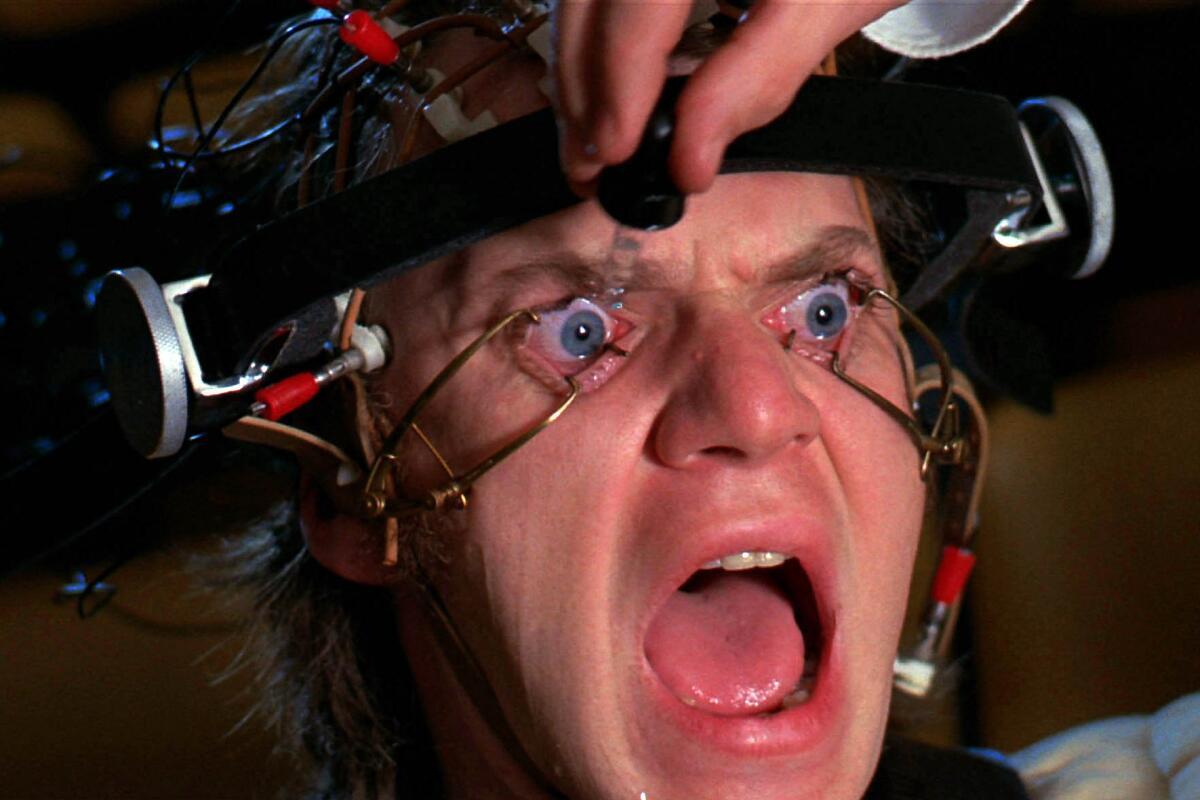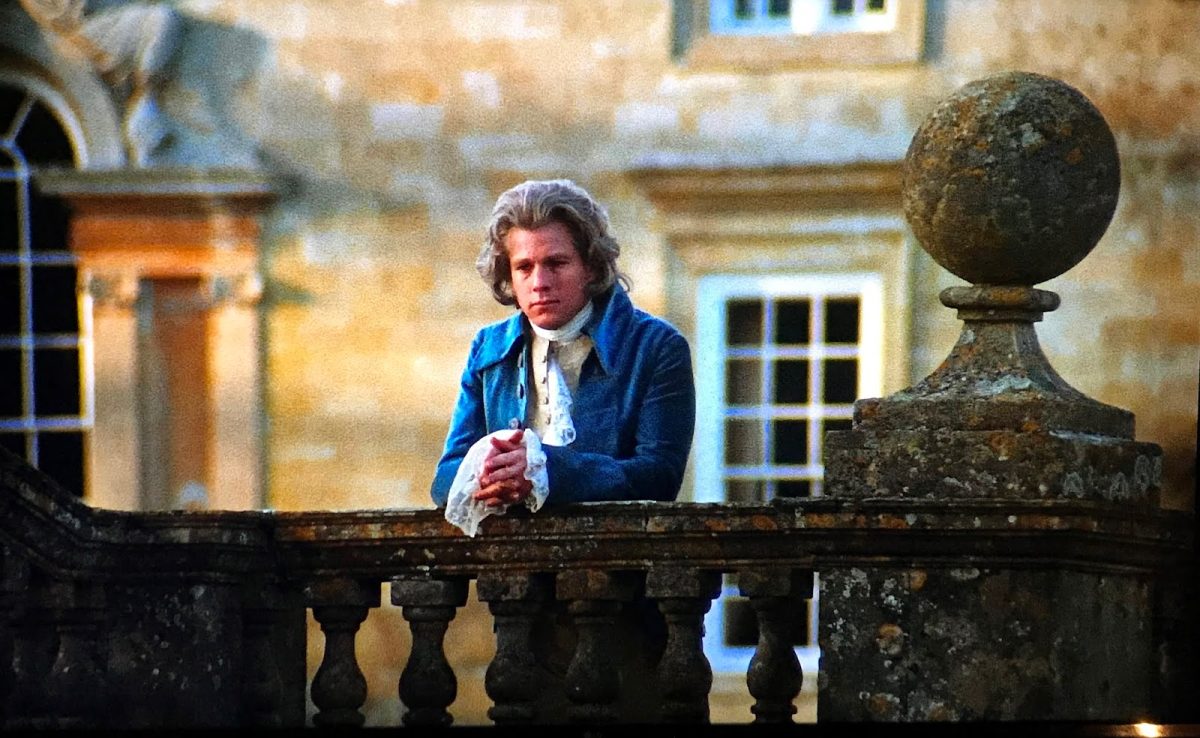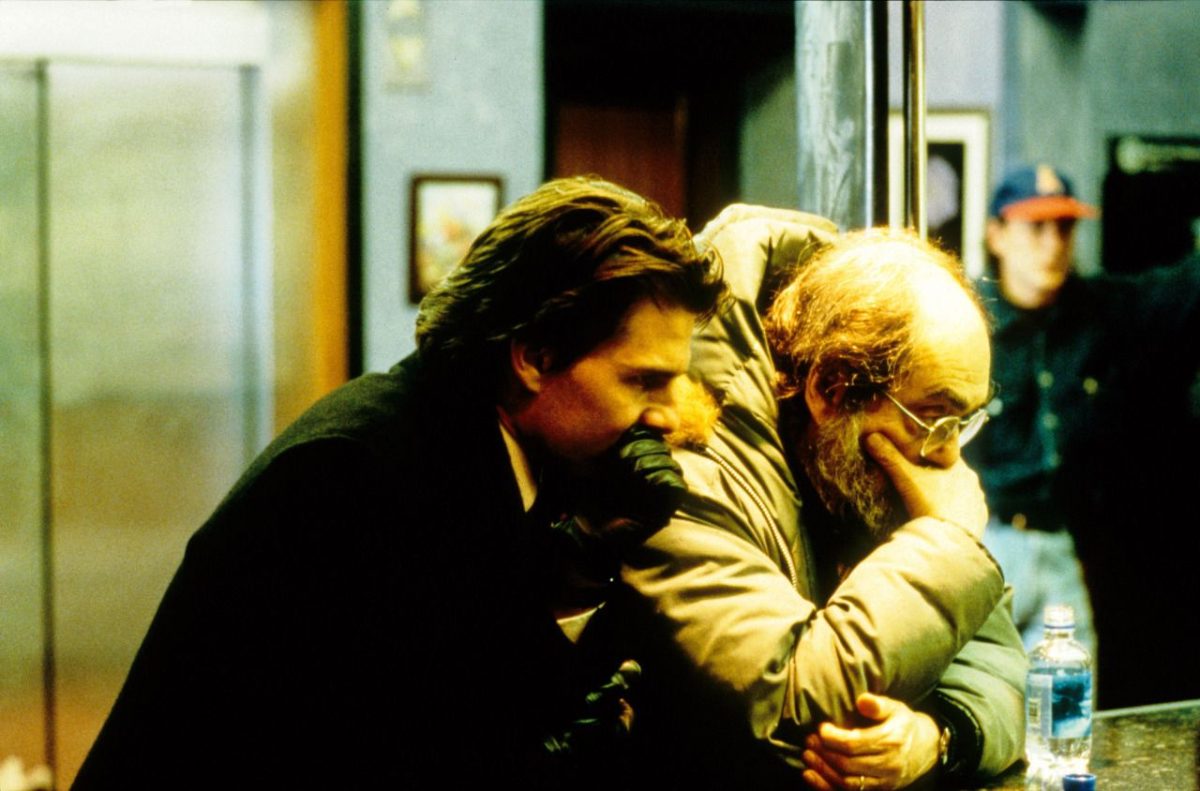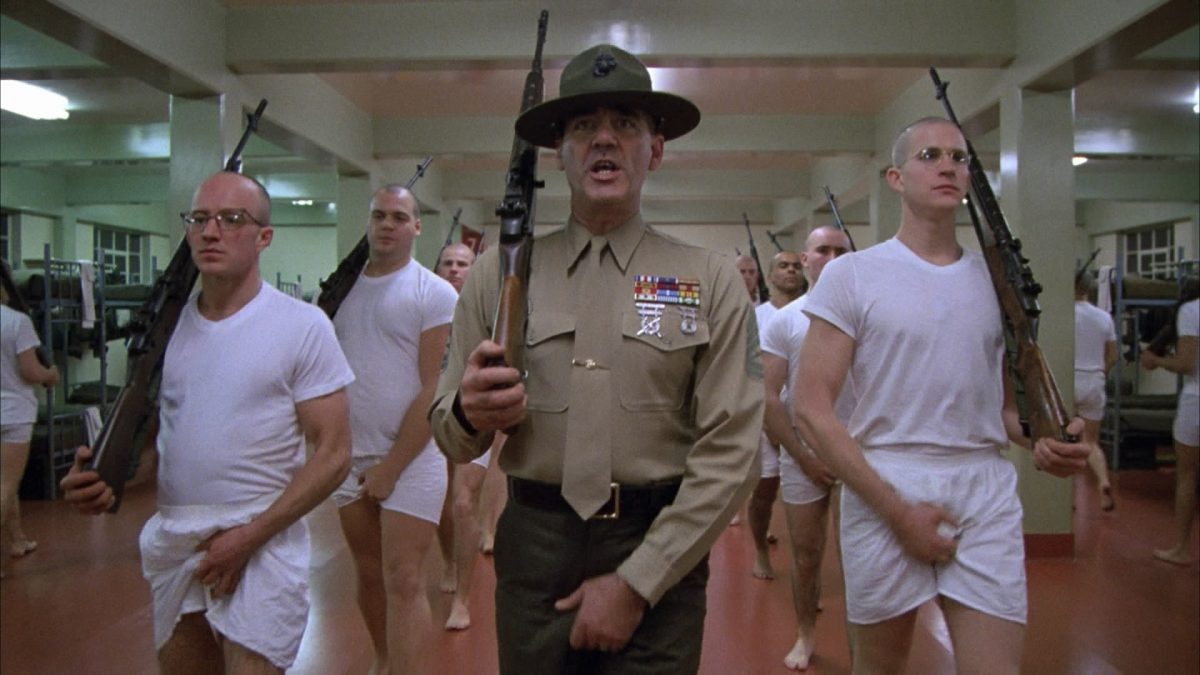A Clockwork Orange
by Tony Parsons
A Clockwork Orange was like seeing your little life blown up and put on the big screen. It took all the consolations of being a teenager in Britain in the early 70s — the tribal identity, the comfort of friendship, the mindless intoxication — and made them mythic, monumental, glorious.
When the film was released in February 1972, down in the West End they queued around the block. But unless you were between the age of 13 and 19, you didn’t get it. Not really. But as little Alex and his Droogs made with the mayhem, you felt as though the world was finally looking in your direction.
A Clockwork Orange was both private and public property. In little Alex every spotty little Suedehead could see his very own reflection. And yet the film was also an event. There had never been anything like it. It was condemned from Parliament and pulpit and denounced by good folk everywhere for its depiction of ultraviolence and the old in-out. Yes, yes, yes. But the reasons A Clockwork Orange was damned were the reasons we loved it.
We saw the film and then we read the book and then we saw the film again. And even the lads who never read books — the thickos, the hard core thugs, the Dims made flesh, blood and bone — all read Burgess’ black masterpiece. They had their nose in a book but they also had an O Level in head-butting. Years later, Paul Cook of the Sex Pistols told me he only ever read two books in his life — The Profession Of Violence about the Kray brothers and A Clockwork Orange. And I realised that he reminded me of almost everyone I grew up with. After little Alex, everyone was an erudite hooligan.
Stanley Kubrick and Anthony Burgess were names we had not heard before A Clockwork Orange, although I knew a hippy who had dropped acid while watching 2001 (a hippy who only a few summers before had been rosy-cheeked boy who played football with you until it was so dark that you couldn’t see the ball). But suddenly Kubrick and Burgess — especially Burgess, funnily enough, because we lacked the film buff’s reverence for the director — were major icons.
Burgess and Kubrick — it was like having your biography ghosted by men who were touched with genius. Growing up among the green, green grass of Billericay and going to school amid the concrete slabs of Basildon new town, it was as though the glamour of Hollywood had suddenly arrived in the overspill of Essex.
Even at the time — especially at the time! — there were films that were more violent than A Clockwork Orange. Susan George was raped stupid in Straw Dogs. The US Cavalry — good guys incarnate when we were growing up — sliced off squaw breasts in Soldier Blue. A Clockwork Orange wasn’t like that. And although we loved it for all the reasons we were meant to hate it — that rousing, exhilarating call to run wild — its appeal went deeper than mere teenage hard core. That wasn’t adult entertainment up there. That was your life.
And we had all seen more violent films. You don’t see the rape in A Clockwork Orange (only the brutal, numbing foreplay — “Viddy well, little brother,” Alex tells the woman’s gagged, prostrate husband). Only one person dies on camera (Miriam Carlin as the catwoman health freak, smashed to death with a giant sculpture of a phallus — that got a few laughs and no mistake). The old tramp — “It’s a stinking world because there’s no law and order any more!” — gets tolchocked mostly in silhouette. And yet, and yet… if you were a teenager in Britain in 1972 then A Clockwork Orange got under the skin in a way that no other film did before or has done since. Because it was more than a movie. It was a validation of a way of life.
We were Suedeheads. And when I say we I mean everybody I knew at my grammar school. The only other option was hippy and although I had a few associates who were heads — because of the bonds of childhood or because I liked Led Zeppelin — we would never have hung out together. A cultural apartheid was in force. And we were Suedeheads.
The Suedeheads had all been Skinheads — the first wave of Skinheads from the tail end of the 60s, which had been an affirmation of working class roots in the face of middle class hippydom. If the second wave of Skins, the shower that appeared in the wake of punk, were obsessed with race, then the preoccupation of the first wave was class. We were as chippy as little Alex when he mocks the Cat Woman with a parody of a toff’s accent.
Our regulation dress emphasised our working class heritage. Ben Sherman shirts, white Levi Sta-Pres, Harrington jackets, number one and number two crops, DMs as polished as jackboots — it made you look hard, even if you weren’t. And if you were hard, it made you look like a baby-chewing psychopath. At my school, apart from a small hippy ghetto, everybody was a Skin. Fat kids and bookish Jewish kids and asthmatic kids as well as psychos who would bite someone’s ear off if a fight was going badly. Mick Jagger could wear a dress in Hyde Park and they could fuck in the mud at Woodstock and John and Yoko could climb into a bag to end the war in Vietnam — but in Essex the cult of the hard man was as deeply entrenched as ever.
You could not help but be touched by the residue of the 60s — I smoked my first joint as a young Skin listening to Riders On The Storm after Jim Morrison died in a bathtub in Paris. But hippy was bourgeois and we were proles. Just like little Alex — a true working class hero, despite his convictions for rape and murder.
Like the Suedeheads, you could see the ghost of the Skins in the uniform of the Droogs — the thin braces, the white strides, the rakish use of hats, the combat boots as combined fashion accessory and blunt instrument. It was all there. Someone had been paying attention. And we were flattered beyond belief.
It was a violent film for violent days. And if the Paki/hippy/queer bashing was overstated then the running battles of desegregated football fans was often ignored. I saw a sawn-off shotgun pulled on Tottenham High Road by a cornered Spurs fan. And week after week, year after year, I saw truncheons coming down on number two crops, away fans invading the home fans’ end and trying to take it, bodies tumbling down terraces, feet and fists flying as one of those sickening gaps appeared in the crowd to give violence some room. Long before Heysel and Hillsborough brought in the executive boxes and all- seater stadia, the football grounds of England in the early 70s played host to weekly riots. So the highly ritualised violence in A Clockwork Orange did not shock us. We could get all that at home.
A Clockwork Orange inverted the language of cinema. Early in the film, Alex and the Droogs prevent a gang rape but not for any noble reasons. They stop it merely because they wish to administer a royal kicking to fat stinking billy-goat Billy-boy (who, with his swastikas, army fatigues and long, unwashed hair, was a dead ringer for the greasers that Suedeheads despised). Despite their rescue act, Alex and the Droogs were just as likely to get up to similar villainy. It was as if Gary Cooper saw off the villains in High Noon and then butt-fucked Grace Kelly for an encore.
After years of living outside of England, Anthony Burgess had come back just in time to see the final days of the Teds and the first stirring of Mods and Rockers. But A Clockwork Orange had a terrible power for more than its futuristic portrait of cult life. The film is about how good it feels to be bad. It had the nerve to reveal the way men are in their darkest hearts. See Camille Paglia for further reading.
While the authorities railed and ranted about the corrupting influence of A Clockwork Orange, we went to see it again and again and, oh, how we laughed. There’s a real bawdy humour to the film — the probation officer grabbing Alex by the bollocks, Alex’s pet snake nestling between the thighs of a panting pin-up, Alex coming on like a gourmet as he sips drugged wine (“Nice smell, sir!”). Call it Chaucerian. Call it Carry On. But it is completely British and it was completely missed by the people who damned the film, the miserable bastards.
My generation had all been children in the 60s. We had missed the action but had watched it from afar, dreaming of when our time would come. Sex and drugs and rock and roll had been common coinage for almost ten years and we were ready for our share. But instead we approached maturity in the stifling mediocrity of Ted Heath’s Britain — the miners’ strike, the three- day week, trade unionists who still thought they were God and Conservatives who still thought they were gentlemen. If little Alex railed and rioted against all that — and the decay of his home in Municipal Flat Block 18a, Linear Block North was familiar to us all — then that did not make him evil. It made him a fitting role model for a growing boy.
The 60s were well and truly dead when A Clockwork Orange appeared. A corrupted innocence abounded, neatly symbolised by the spiked moloko that Alex and the Droogs are sipping in the Korova Milk Bar at the start of A Clockwork Orange. We could relate to that — we would take anything that was going (usually only a bit of speed or the odd joint). The hippy ideal of drugs to make the world a better place or to expand the mind was discredited. We just wanted to get shitfaced in the Korova.
A Clockwork Orange was pushed as a morality tale about man’s choice between good and evil. But as we brooded in Ted Heath’s Britain, we didn’t feel that we had any choices. A morality tale? Perhaps. But A Clockwork Orange has an amoral heart. It is a subversive tribute to the heartless glory of youth.
Burgess had hoped that the music in A Clockwork Orange would uplift our malnourished souls. And it did — the Moog- enriched soundtrack was certainly the first classical music I ever listened to. But the Nazis listened to Mozart in the camps. And the Suedeheads could listen to the glorious Ninth by lovely, lovely Ludwig before going out into the West End night with their blood pumping.
We were used to our betters trying to improve us. We had grown up in an England that was not yet a secular society — every day began with assembly and some of that old-fashioned, hymn-singing C of E religion. The concept of goodness in A Clockwork Orange probably struck a more resonant chord with teenagers in the early 70s than it would with a later generation. A Clockwork Orange posed the question — do you want us to be good? Or do you just want us to behave ourselves? Between the Lord’s Prayer and the cane, we were posed with the same moral dilemma every day of our lives.
The thuggery was stylised in A Clockwork Orange, of course. At the Locarno or the Mecca on a Saturday night — or at White Hart Lane or Upton Park on a Saturday afternoon — it was not like that. But it was just as staged, just as inevitable. Football fans would go to the away supporters end at half-time and do their worst. They didn’t have to do anything to upset you, just as you didn’t have to provoke anyone to get your face filled in On Saturday night beneath the plastic palm trees. Violence was as scripted, as choreographed, as formalised as communion.
And so A Clockwork Orange spoke to us. It was set in the future and yet it seemed to address subjects that had never been addressed before. A Clockwork Orange was the vision of an Englishman who had been an expatriate for much of his adult life and a truly international — perhaps even cosmic — American director. But A Clockwork Orange was about our Britain. Not the country of somebody else’s mythology — the Blitz spirit of World War II, the saucy charm of the Swinging 60s — but the way we were. Fishfingers and football pools and furniture that was a fire hazard. Parents that were losing grip and politicians that couldn’t cope and schools that couldn’t get you to turn up. Authority was crumbling on every side and teenage rebellion was turning nasty. If they attached electrodes to Alex’s brilliant brain to get him to behave, then that didn’t seem so far-fetched in Ted’s divided nation.
Yet it was not all bad. Alex picks up two chicks at the record shop – and takes them home for a girl sandwich. You could do that in those days. That scene encapsulates what it was like to come of age in the 70s — the love of music, the casual sex, the absolute fearlessness of those 20 years or so when the world was post-pill and pre-AIDS.
And we loved Alex because he was all we wanted to be — an anarchist, insouciant when it came to sex, blase in his attitude to violence (the neat touch of having Alex croon Singin’ In The Rain as he beats up the writer was all Kubrick — the Alex of Burgess’ novel would never touch anything as vulgar as a Hollywood tune), a winning combination of brain and brawn.
A Clockwork Orange was big box office. In today’s terms, it was bigger than Batman. But after 61 weeks Kubrick pulled the plug on the film, upset by the outraged response of the authorities, unnerved by copycat crime. But most of us didn’t go out raping women with horrorshow groodies and kicking tramps to death (although some did). And most of us still preferred Rod Stewart to Ludwig van Beethoven. Yet all of us recognised the rites of passage in A Clockwork Orange — the petty crime, the tribal identity, the constant threat of violence. Not violence for profit or pleasure but ritual violence. English violence. Even at its most excessive and futuristic, A Clockwork Orange rang true. In the overspill of suburban England, a world of bus stops and chip shops, where there was nothing to do but dream and get your head kicked in, A Clockwork Orange pushed all the buttons.
The Droogs are the cult that never was. At the height of the controversy, when A Clockwork Orange was a byword for all that was going wrong in the Western world, I watched three young men dressed in full Droog dress crossing Leicester Square. They were terrifying. Appalling. Immaculate. And although they did nothing but stroll through Leicester Square, there was a real touch of evil about them.
When Kubrick and Warner Brothers pulled the film from distribution, the Droogs disappeared. And perhaps it was just as well. The Droogs would have upped the ante. As I said, the first wave of Skinheads was a broad black church containing everyone from thuggish shock troops to timid infantrymen. But when you’re a Droog, you’re a Droog all the way.
In conventional Hollywood terms, little Alex certainly pays for his wicked ways. For most of the film he is a prisoner, with snot on his chin, trembling with fear. And yet figures of authority — from Pauline Kael to the local magistrate, from the Home Secretary to Leslie Halliwell — all hated A Clockwork Orange.
These were different days. The generation gap was still very much in place. It is not like today where middle-aged baby boomers and their teenage children all enjoy the same stuff, where my 15-year-old son and I can both get off on Oasis and Reservoir Dogs. It wasn’t like that then. Our parents had worn uniforms of the armed services rather than youth cults. We had speed, they
had rationed bananas. There was a real abyss between the generations. They all hated A Clockwork Orange but we expected them to. We were misunderstood. We expected to be misunderstood. And we liked it that way — A Clockwork Orange belonged to us. The middle-aged, middle class intelligentsia wouldn’t touch it with a barge pole.
But for all its celebratory, inflammatory power, A Clockwork Orange is not just about wild youth. It is about growing up, getting older, discovering the limits of teenage friendship and tribal identity. If you saw it as you were approaching the threshold of maturity, then the sufferings of little Alex was perhaps the first intimation that soon you would be on your own. A Clockwork Orange holds the imagination even now because it seems like a last cry of freedom before the onset of suffocating maturity.
Much has been made of Kubrick losing the final chapter of Burgess’ novel, the chapter where Alex starts to grow weary of his wicked ways and yearn for stability. “A vindication of free will had become an exaltation to sin,” complained the author. But losing the last chapter didn’t really matter because we would all live the final chapter soon enough.
For all of us, there would soon be a girl, a job and even a baby. But before that the spirit of A Clockwork Orange would make one last stand four or five years later in punk. Not the goody- goody, Rock Against Racism, girl-bass-player side of punk but the dark side.
The feral, untamed spirit of A Clockwork Orange was there in the Sex Pistols but not the Clash. It was not at the Anti-Nazi League beanfests but it was there at the 100 Club when the broken glass was flying. And in 1977 when I tolchocked some starry hippy who had been doing the old in-out with a girl I liked, the ghost of little Alex was cackling on my shoulder, a dark guardian angel, urging me on.
Kubrick’s bloody rhapsody is the lost masterpiece of British cinema. Yes, it glorified violence and glamorised hooligans. Guilty as charged. But for my generation A Clockwork Orange meant much more than an exaltation to sin. To us it meant that somebody out there had noticed that we were alive.
Movie’s Heaven. An anthology of new film writing, Empire magazine supplement, April 1995, pp. 92-99





1 thought on “VIDDY WELL, LITTLE BROTHER!”
Blah blah blah, you know the two girls at the record shop were well underage, don’t you? You seriously took the wrong message from that movie…